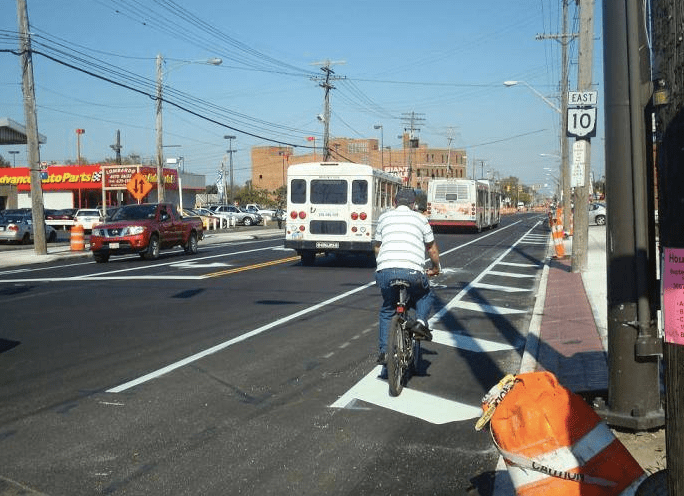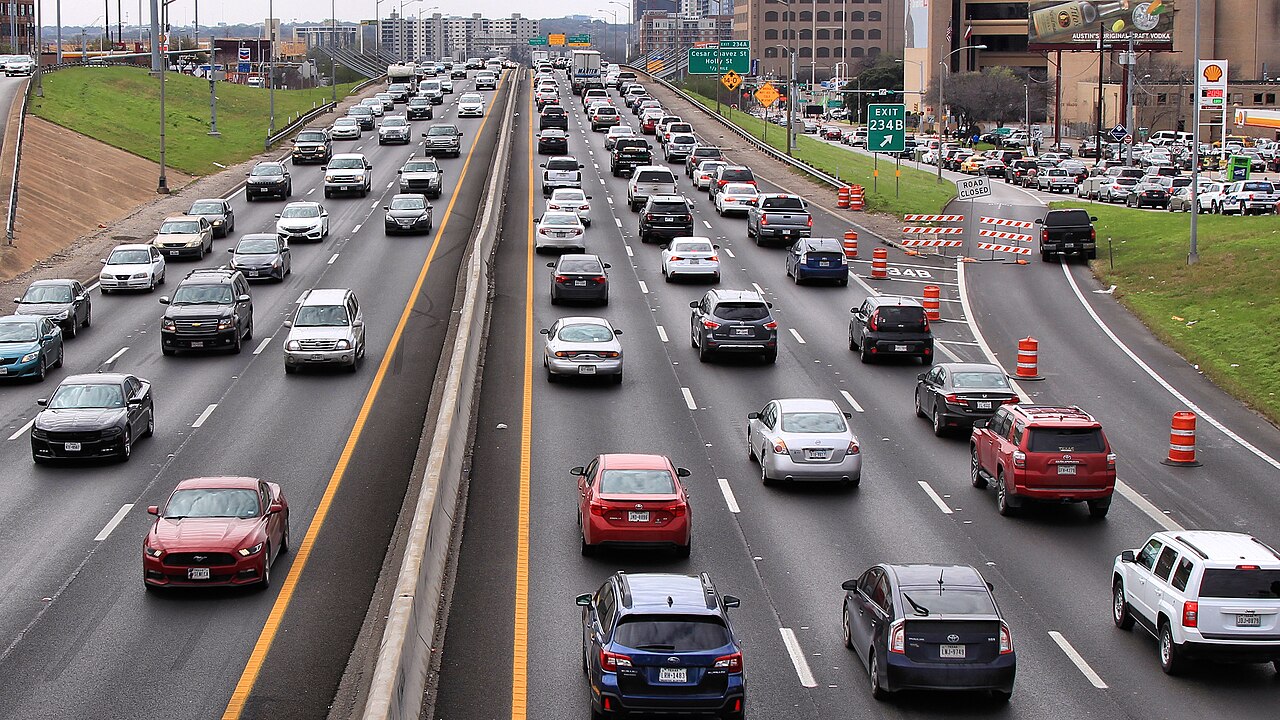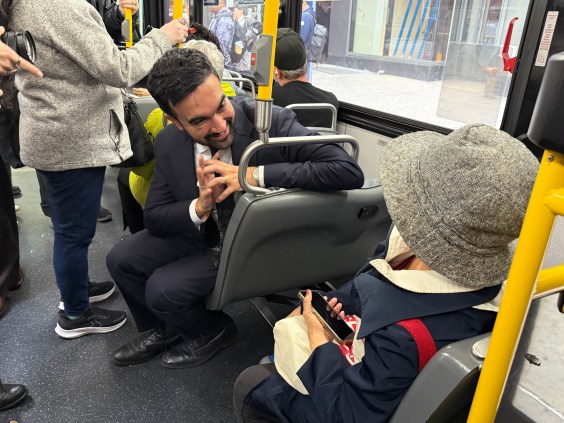
Michael Andersen blogs for The Green Lane Project, a PeopleForBikes program that helps U.S. cities build better bike lanes to create low-stress streets.
For all their benefits, protected bike lanes can be complicated. Between maintaining barriers, keeping them clear of snow and preserving intersection visibility, it's understandable that cities opt not to include them on every street project.
Buffered bike lanes, though, are pretty simple: if you've got at least two feet of roadway to spare, you lay down some hash marks between car and bike lanes and double the comfort of biking on a street.
Except in Cleveland, apparently.
When the above image started circulating online this summer, many people assumed some sort of miscommunication was afoot in Cleveland. The main point of a buffered bike lane, as made clear by everyone from AASHTO to NACTO, is to separate bikes from moving cars and/or the doors of parked cars, not to protect bikes from curbs.
But as more information emerged and it began to seem as if Cleveland was not only doing this intentionally but might be planning to repeat the design elsewhere in town, we wondered whether this might be a new trend in street design.
So we emailed cities around the country and asked their bikeway designers to say whether they'd ever want to use this setup. Here's what they said.
Mark Zwoyer, PE, assistant administrator of the department of public works in Indianapolis:
We probably would not use this in Indianapolis. We use cross hatch buffers to separate the bikes and the motor traffic, but not to offset bikes from the curb.
Dongho Chang, PE, chief road engineer in Seattle:
Buffer seems to be in the wrong place. We'd want to buffer the bikes from travelled vehicle lane.
Jonathan Lewis, AICP, assistant director of planning in Atlanta's transportation department:
I feel like I’m missing something? Why is the buffer next to the curb? I don’t see an upside. In Atlanta, during torrential rains, the curbside bike lanes flood. I guess that’s an upside to this design, but it doesn’t seem worth the trade-off. It is not a configuration we would consider in Atlanta.
Nathan Wilkes, PE, of the transportation department of Austin, Texas:
I think the photo shows well where the rider wants to be. In Austin, TX we always put our buffer to traffic where there is the most value in creating separation between fast moving traffic and the person on the bicycle to create a bicycle facility that a larger portion of the population is comfortable in. The only use I have seen as shown in the photo is if there were parked cars to the right of the bicycle lane where there was more concern about the door zone than the moving traffic. ... In short it looks to be a waste of buffer material applied incorrectly.
Rachael Bronson, associate city planner for the Denver Department of Public Works:
Without parallel parking, I’d prefer this to be on the car side. Or maybe buffer on both sides if there are a lot of access points where bikes may need a buffer on the curb side.
She cc'd Michael Koslow, PE, a senior engineer at Denver DPW, who added:
I agree that car-side buffering would be better; however if there’s additional room it’d be good to keep bicycles toward the middle of a wider lane for conspicuity by drivers.
Matthew Dyrdahl, AICP, bicycle and pedestrian coordinator in Minneapolis:
We typically buffer the other side, meaning put the buffer between the travel lane and the bicycle lane.
He cc'd Simon Blenski, bicycle plannner in the Minneapolis Public Works Department, who added:
We typically install a buffer on the travel lane side. We have installed buffers on both sides of the bike lane where there is excess space and where parking is adjacent to the bike lane.
I can only think of one example where we only have a buffer on the curb side and not the travel lane side. It is an exceptional case on Hennepin Ave S between 12th St and 13th St, where there is a wide parking bay next to the bike lane. The buffer was placed in the excess parking bay width.
We have never done a buffer directly adjacent to a curb with no parking present.
OK, so we were zero for eight on finding another city that would consider this sort of buffer. But we also reached out to a consulting engineer who works with many cities: Rock Miller, PE, of Stantec Engineering.
Miller, who's based in Orange County, California, said there is one possible reason to stripe a buffer this way: to ensure that the bike lane is close to fast-moving trucks. If it's close enough, the wind from those trucks will whip away leaves, seeds and bark.
Another rationale: to reduce the amount of pavement that snowplow operators feel the need to keep clear in winter.
Vehicular cyclists push for minimal buffer, as shown, because wind sweep from passing trucks tends to reduce debris. ... There could also be a significant snow storage and removal factor. These are perhaps valid concerns if maintenance will have limits, but new riders will want the buffer on the traffic side, and to also have thorough sweeping.
As for Cleveland road engineer Andy Cross's stated concern that putting the buffer between bike and auto traffic would increase the risk of cars turning right in front of bikes, Miller said he's not aware of evidence that either supports this or denies it.
Because we have so little exposure (volume) data, we really don't know if one treatment is more risky than another or if a simple design adjustment greatly changes the results.
Ultimately, Miller said, "it is up to the designer, with input from users, to decide how to use the space."
You can follow The Green Lane Project on LinkedIn, Twitter and Facebook or sign up for its weekly news digest about protected bike lanes.






